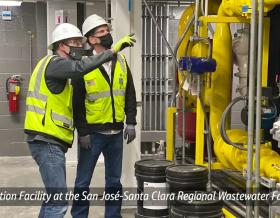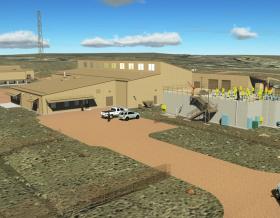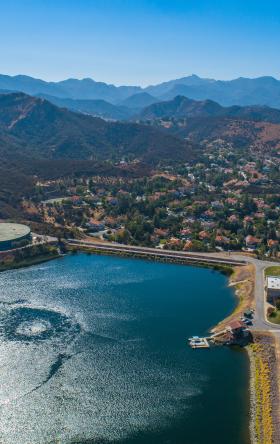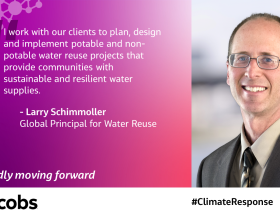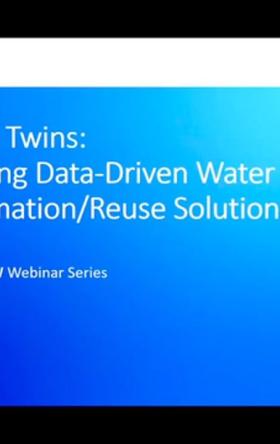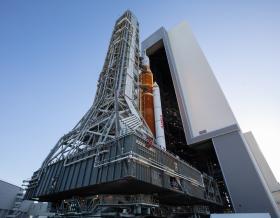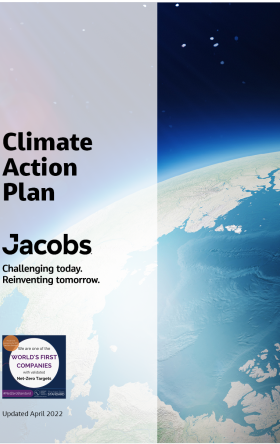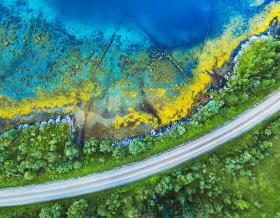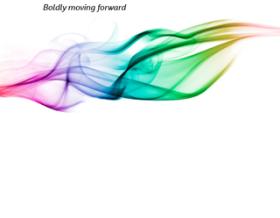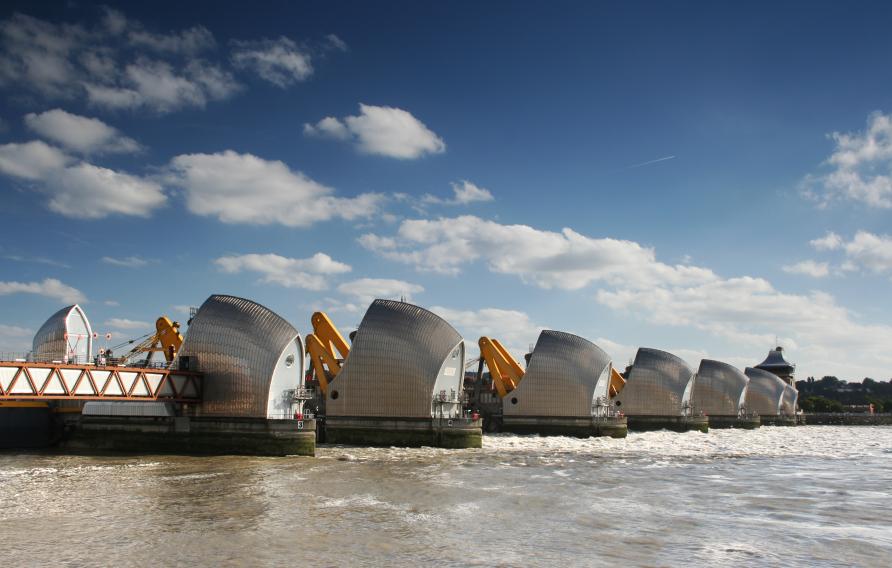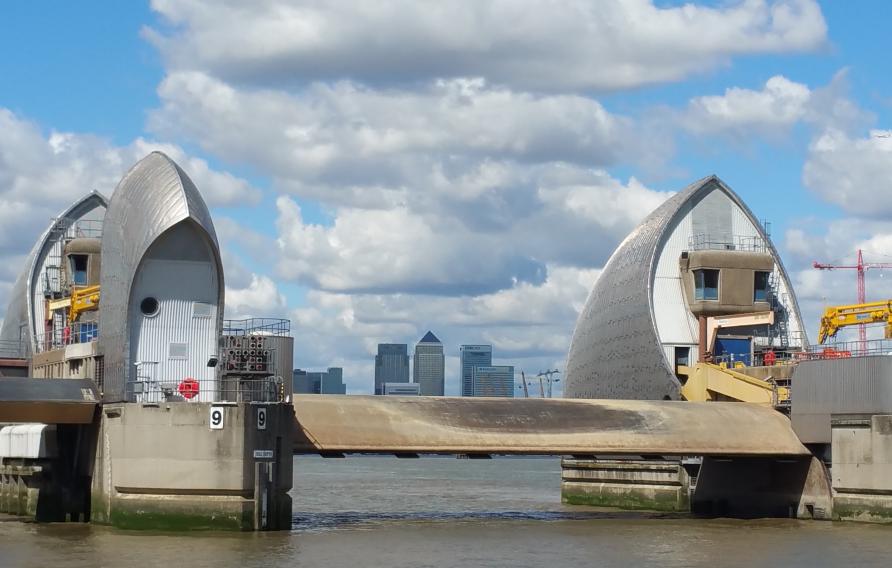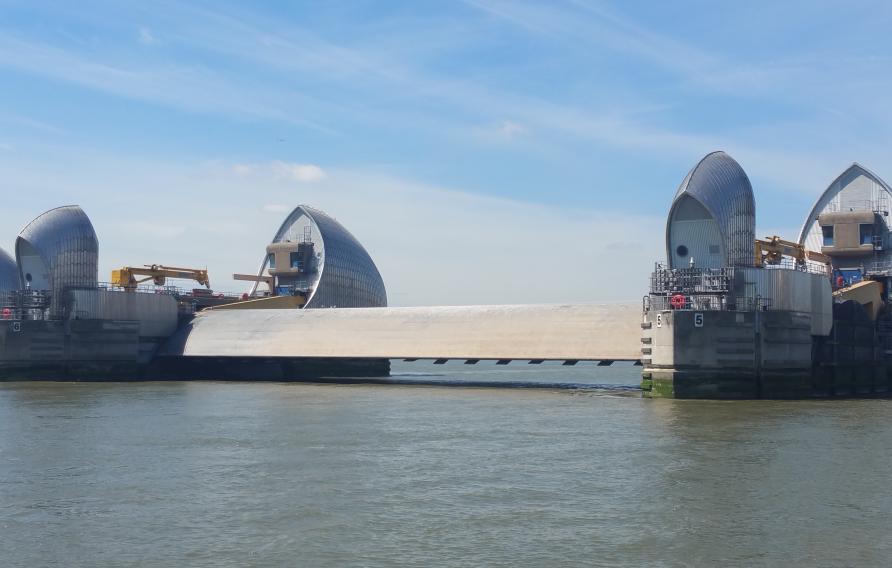Supporting the delivery of TEAM2100
From world-class asset management to sustainable flood risk management and inclusive ways of working, we're managing the first ten years of the TEAM2100 program that's providing resilience for generations to come.
World-class asset management
A world-class approach to asset management and how it is effectively integrated with program management is fundamental to the work underway. Within two years of program start, TEAM2100 attained ISO 55001 certification, becoming the first U.K. Government major program to achieve this recognition.
The best of Jacobs’ globally recognized program management system, asset management expertise and the Environment Agency’s knowledge and people were combined to develop an asset management system that meets the Thames Estuary needs. The service-focused asset management system tackles the management of existing assets and the creation of new assets and asset systems over a 100-year life cycle period.
First-of-the-kind modelling to manage assets along the whole estuary has allowed the program to start developing risk-based asset management strategies. The overarching flood risk management strategy identifies and understands some 25 asset systems, their benefits and costs, and their interdependencies to help prioritize asset management activity.
TEAM2100 used Water Services Association of Australia’s leading Asset Management Customer Value Project, a rigorous benchmarking process to provide a better appreciation of what needs to be done to improve management maturity. Used alongside auditing and integrated with the requirements of ISO 55001, the process improved transparency and provided TEAM2100 with a holistic view of the organization, its strengths and areas for improvement.
We are leveraging data and technology to ensure assets are managed in an efficient and intelligent way. By implementing remote asset sensor technology for example to monitor real-time performance data on key critical assets within the Thames Estuary system, we’re able to quickly identify any performance changes and intervene to reduce whole life costs of asset management and minimize any changes in flood risk.
Portable Leica Pegasus lidar equipment was used — either from a riverboat or carried as a backpack — to run surveys at low tide, collect the data, and use it in the office when convenient. It’s particularly useful for assets that are very difficult or dangerous to access — so much safer when compared to visual inspections on foot. Pegasus makes planning for works and inspections on the foreshore much more efficient (from time, cost and safety perspectives).
The team also created a web and desk-based information portal (Estuary Eye) and associated App to offer a common data environment for review, access, management and use of asset data collected and stored. The embedded videos and 3D information provide instant access to complex geospatial asset information. The tools developed enable a highly efficient approach to option and design appraisals, creating an estuary-wide BIM model of the asset system, and an easy visual assessment of live project progress. With over 100 map layers, the Estuary Eye is a data management tool, a highly effective appraisal and design tool, and an interface to a vast amount of new and historic field-collected data.
Optimized asset management strategies
TEAM2100’s Digital Asset Management Plans are an interactive, easy-to-use online platform sharing information about future activities required to deliver the Thames Estuary 2100 Plan. During the planning process, we run a series of asset management strategy scenarios on a lifecycle model tool to select the best performing asset management strategy for each AMP aiming at the best combination of whole life cost and asset condition. TEAM2100 is currently developing a carbon assessment capability into the lifecycle model to support the delivery of the Environment Agency’s corporate environmental and sustainability goals.
Asset intelligence
TEAM2100 has developed a methodology to improve understanding of the health of the fixed asset portfolio. It focuses on a structured approach to collecting georeferenced asset defect data to provide asset intelligence and support data-driven decision-making. The outputs enable users to understand and analyze defect occurrence and significance. This can potentially support investment decisions and, if the data is collected consistently over time, inform future updates of the Thames Estuary’s asset deterioration curves to significantly enhance our ability to plan for future investments.
“Delivering for sustainability in an asset management program focused on resilient flood risk management requires reaching out across traditional groupings to deliver an enterprise-wide ambition. TEAM2100’s Integrated Delivery Team has transitioned to that shared ambition by providing a clear line of sight of what, and crucially why, we are focused on sustainability – and a common understanding that, to deliver for sustainability, the concept of a project team extends into procurement, commercial, suppliers and many teams beyond.”
Sustainability at the heart of flood resilience
The program has pioneered new ways of working within the asset management framework, including the introduction of an integrated sustainability case during the option appraisal and selection process, bringing sustainability considerations into decision making throughout project lifecycles. The team developed an inclusive sustainability Key Performance Indicator (KPI) encompassing every stage of asset management, from initial analysis and appraisal through to the delivery and handover of projects. This supported the focus towards net-zero carbon as designers and construction teams work together to drive down whole life carbon demand on individual projects. Using established carbon planning tools and working collaboratively to transform the way these are applied, the program has integrated carbon accounting throughout the project lifecycle. For example, a preferred option for one of our typical asset management projects was selected partially because it had a 15% lower whole life carbon cost than any of the other options, which was subsequently reduced by a further 3% through design and delivery.
-
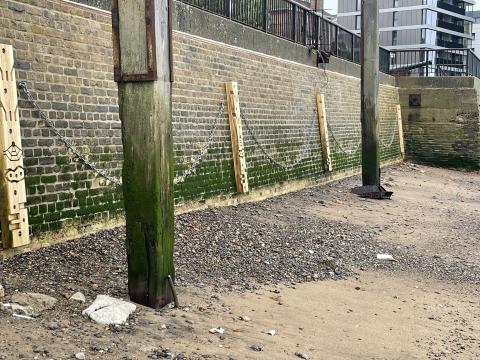
-
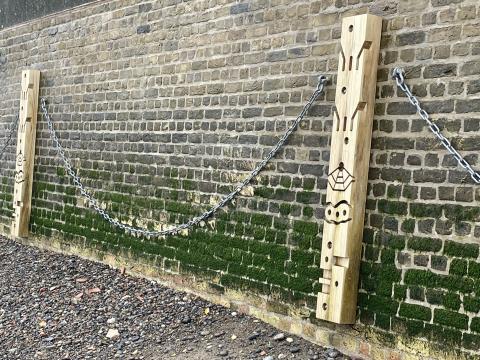
Fenders installed at Deptford on the project site, which are made of Accoya, a Cradle to Cradle certified timber, and encourage habitat creation.
Throughout options appraisal and design, we consider opportunities to integrate Cradle to Cradle (C2C) Certified® materials and wider circular economy principles into our projects, and we actively engage with suppliers to identify further opportunities. We have developed challenging targets for the integration of C2C Certified® materials into our project delivery. In this respect, we have pioneered the world’s first application of C2C Certified® materials to an infrastructure program, where any new projects will need to source and integrate a significant proportion of materials from circular economy resources.
Different ways of working
An innovative mindset which drives efficiency
As one of the U.K. Government’s Pathfinder projects, TEAM2100 is leading the way in finding innovative solutions to managing flood risk and providing climate resilience. The program team has laid the foundation for a long-term approach to managing and strengthening flood defenses, bringing together innovation, continuous improvement and knowledge transfer as key to unlocking the full potential of the program.
The program is an early adopter of Project 13 — an industry-led collaborative forum, which promotes alternative models to deliver infrastructure. It is also an active member of I3P – the Infrastructure Industry Innovation Platform. I3P allows TEAM2100 to register new ideas for further development and support, to share examples of innovation and lessons learnt from projects, and to access innovative solutions and experiences from other projects and programs.
Looking further ahead than most asset management programs, TEAM2100 has consistently invested in a culture that enables progress and inspires innovation. This culture of change endowed the program with a pool of more than 400 innovations and improvements to date, covering a wide range of areas, including asset management, technology, health and safety, sustainability and the environment, as well as softer aspects such as leadership, collaboration and communication. In the first seven years of the program alone, more than $60 million (£50 million) savings were delivered on approximately $346 million (£290 million) worth of improvements to reduce the flood risk for 21,267 households.
Promoting an inclusive, collaborative and supportive culture
TEAM2100 is a highly diverse program of staff from more than 60 different countries, various age ranges and a gender balance. This diversity uniquely provides us with different insights and problem-solving approaches, and leads us to a higher performing, highly collaborative and close-knit team. To maximize our effectiveness across this diverse team, all staff undertake “Insights” behavioral training, and we have a very strong social scene, staff wellbeing surveys and active communications, which have provided a strong culture of inclusivity and collaboration across the program. This extends through to our Tier 2 supply chain.
As well as gender and national diversity, we support cognitive diversity to ensure different perspectives are applied to roles, as well as providing opportunities to a wide range of staff. We have an 18-month rotational program for our team, which encourages skills mobility as well as cross-sector experience transfer. Job opportunities are open to everyone through expressions of interest applications, which ensure fair recruitment. We encourage recruitment from other career sectors into the team as part of our vision to upskill in climate resilience, which is becoming increasingly important.
Recognizing our collaborative delivery, we were successfully audited against ISO 44001, demonstrating collaborative business relationships and promoting new ways of working, transferring knowledge and good practices to the wider business.
Delivering safely is paramount
A strong culture of health, safety and wellbeing is at the heart of the program and fully supported by the senior leadership of all three organizations within the Integrated Delivery Team.
Using a best for the job approach, each organization leads on their corresponding area when it comes to health and safety on the program. For example, Balfour Beatty leads on construction, while Jacobs leads on the early feasibility and design phases. This safety culture is reinforced by regular senior management and design site visits, and an Observation App encouraging and rewarding staff for reporting near misses or examples of good practice. The team is represented on various forums and has attendance at key health and safety seminars such as the ICE Health Summit, industry-leading designing for safety forums, and a designers’ health and safety working group.
Mental health and wellbeing hold a prominent and important position on TEAM2100, with 20 trained Mental Health First Aiders on the team. In addition to regular training such as first aid, confined space training and wellbeing workshops, we hold a bi-annual Wellbeing Survey for our teams and supply chain to participate and input, providing us with important feedback to help inform initiatives, agree actions and feedback back to staff.
Our “Getting Things Right First Time” initiative is encouraging high standards of delivery, which in turn impact safety performance in a positive way. The program has specific Key Performance Indicators agreed by the Integrated Delivery Team, and comprise five leading Health and Safety Performance Indicators (HSPI), and one lagging indicator which is the quarterly client health, safety, environment and wellbeing (HSEW) audit score. These KPIs are regularly reviewed against the previous safety performance. Out on site, all teams follow Balfour Beatty’s Golden Safety Rules – “Be Fit For Work, Always” which includes a briefing before starting work, reporting all unsafe conditions and events, and stopping work if anything changes. Additionally, everyone on the program undergoes Balfour Beatty’s “Zero Harm – Make Safety Personal” training.

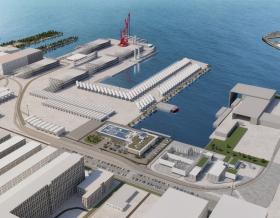

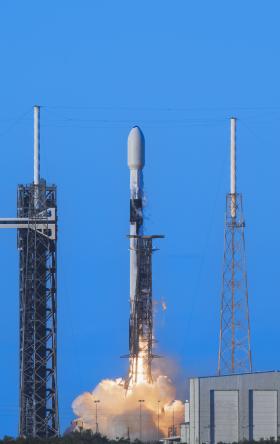

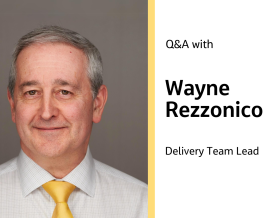

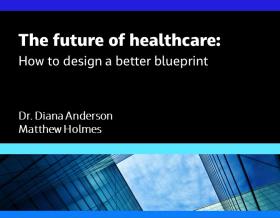
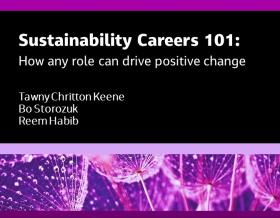
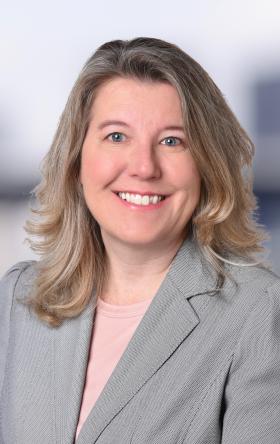
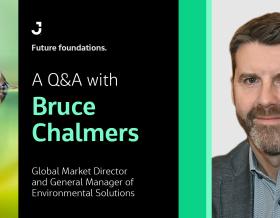
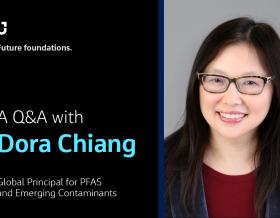
2c4e.jpg?h=c7c14dee&itok=FmPI2126)


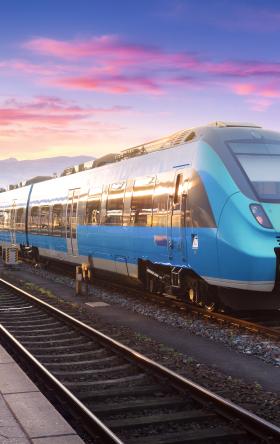
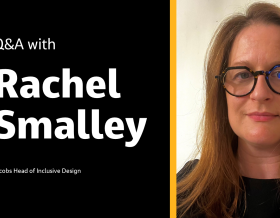

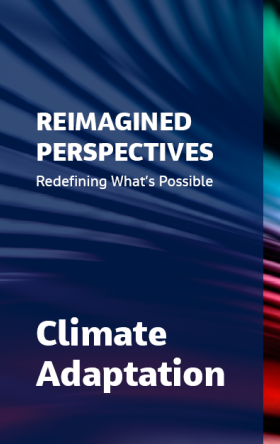
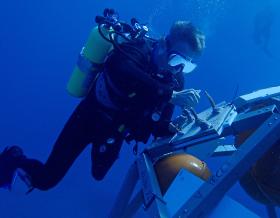
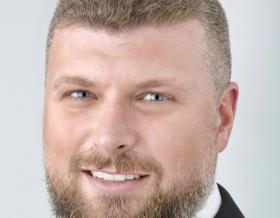
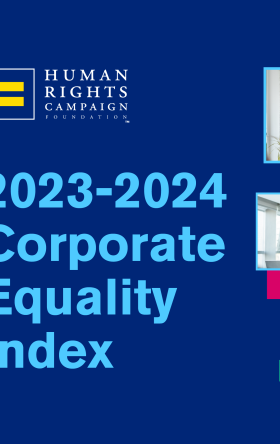

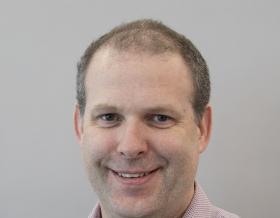





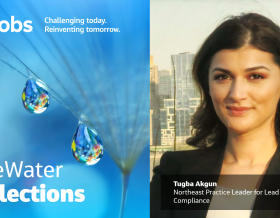

_0ac2b.jpg?h=8a6d63f3&itok=5vsqFiQH)

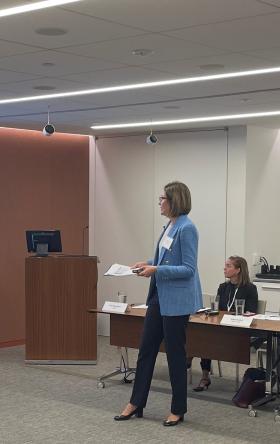
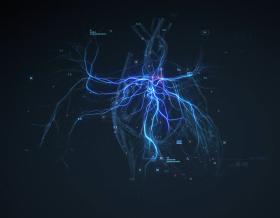
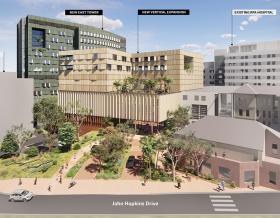
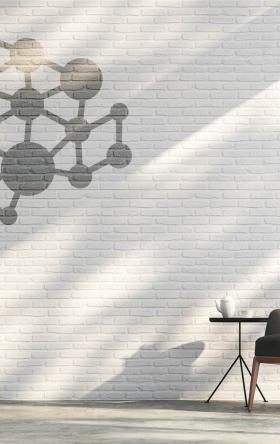
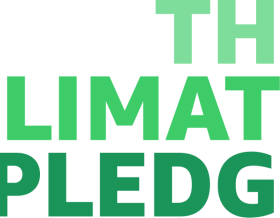



2747.png?h=1314d3d4&itok=rFs9mG95)

